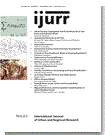A key element of New York City Mayor Michael Bloomberg’s New Housing Marketplace program has been the use of voluntary inclusionary zoning, through which private developers have been offered tax breaks and density bonuses to develop affordable housing on newly rezoned land. While this program has failed to alleviate the housing affordability crisis in New York City, little attention has been paid to its political effects on community-based struggles over housing. This article addresses this question by examining the 2005 Greenpoint-Williamsburg Waterfront Rezoning, which combined a voluntary inclusionary zoning program with a tenant services contract intended to mitigate the residential displacement effects of the rezoning. I critically examine its design, execution and monitoring, based on two years of work as an organizer and administrator of the tenant services contract. I argue that technologies of consent and control have reshaped the politics of housing in North Brooklyn by replacing resistance to gentrification with amelioration of its effects, through the anticipated creation of affordable housing. The upshot has been an emergent politics of housing in which real estate-led development is regarded not as a cause of gentrification but as its solution.

